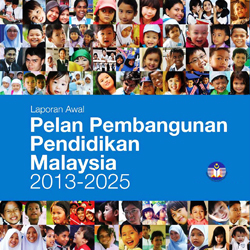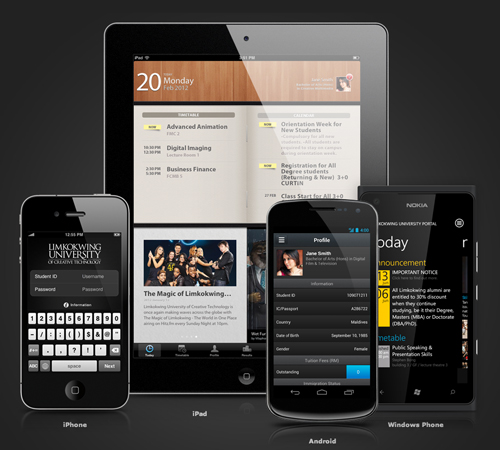Malaysia's education system - which has been in a bit of a roller coaster ride for a while now - looks like it may finally be finding its footing.
The launch of the Malaysia Education Blueprint 2013-2025 recently shows a more holistic and comprehensive approach to transform an education system which all stakeholders have admitted has been in desperate need of a disruptive strategy.
It will also bridge gaps in the academic achievements of urban and rural pupils, as well as iron out disparities caused by socio-economic and gender factors.
Some of the key measures include making SPM English a compulsory pass in 2016, a new Bahasa Malaysia syllabus for national-type schools and increasing the percentage of higher order thinking skills questions for the UPSR, Form 3 and SPM examination.
While these are positive steps, questions remain about the implementation which has always been our Achilles heel with many such well-intentioned efforts.
Take the goal to make SPM English a compulsory pass in 2016. Yet a recent report by the Government admitted that out of 60,000 English teachers nationwide, about 70 per cent of them did poorly when sitting for the English Language Cambridge Placement Test.
These English language teachers, classified as “unfit” to teach the subject, are being sent to courses to improve their command of English.

In another globally benchmarked study - Trends in International Mathematics and Science Study (TIMSS), Malaysian students suffered the biggest drop in test scores among all countries for Maths and Science between 1999 and 2011. When Malaysia first participated in TIMSS in 1999, its average student score was higher than the international average in both Mathematics and Science.
While the blueprint is designed for the next 13 years - to take us well into the first quarter of the next decade, the question facing Malaysia and all countries is how do we prepare our young for a future that is unpredictable at best? How do we ensure that the education we provide is one that embraces all types of intelligences - for example those who do not do well at tests, but who are creative and innovative in problem solving?
Why do we continue to give tests in isolation when in the ‘real-world' people collaborate to find a solution?
Consider this: In the past, schools, universities and careers were singular and linear. People would be boxed into certain areas of strength, get a job based on that and stay in a career for most of their working life. Today, this model is obsolete. Careers are now fragmented, specialized and collaborative.
In reforming education, the reform of teaching must also take place because otherwise all the best laid plans will not bring about the results we seek. Teaching after all is both art and science; it is as much about the big picture as it is about the details.
In the last 10 years, technology has completely disrupted ‘education' as we have known it for a 100 years previously.
Today, the chalkboard and the powerpoint have been replaced by the iPad. How much of our education reformation will take this into account?

Today, the big heavy encyclopaedias of the past have gone the way of the dinosaur. Together with textbooks, they are a remnant of a world that no longer exists, replaced by Google search. How can our teachers adopt this in the classroom?
Today, futurists tells us that 60% of the best jobs in the next 10 years haven't been invented yet.While we may not know what these jobs are, what we can surmise is that its parts will include imagination, collaboration and innovation because those elements are the DNA of every technological breakthrough and disruptive business over the last 10 years.
How do we teach teachers to use the curriculum as a guide, but to be creative and inventive with delivery?
We are told that one big step in this direction is to attract the top 30% of university graduates as teachers. This in itself is a dilemma - are we attracting people who are good test-takers? How do we find the passionate types - who may not be necessarily ‘A' students but who are natural born leaders and creative sorts?
The blueprint is likely the most important national document, even it it may be imperfect at this time. There will never be a perfect education blueprint that will cross all the t's and the dot all the i's that is going to make every stakeholder happy.
Ultimately, the blueprint must remain an organic document, with the big picture in mind, but with the flexibility to make adjustments in the details.
Designing the future is about balance of art and science. There are no right answers and that is how I see the blueprint document.
What it lays down is a way forward. Ultimately, it will come down to ensuring that the best people, the best ideas and the best methods are allowed to gain traction to move this forward.
 In another globally benchmarked study - Trends in International Mathematics and Science Study (TIMSS), Malaysian students suffered the biggest drop in test scores among all countries for Maths and Science between 1999 and 2011. When Malaysia first participated in TIMSS in 1999, its average student score was higher than the international average in both Mathematics and Science.
While the blueprint is designed for the next 13 years - to take us well into the first quarter of the next decade, the question facing Malaysia and all countries is how do we prepare our young for a future that is unpredictable at best? How do we ensure that the education we provide is one that embraces all types of intelligences - for example those who do not do well at tests, but who are creative and innovative in problem solving?
Why do we continue to give tests in isolation when in the ‘real-world' people collaborate to find a solution?
Consider this: In the past, schools, universities and careers were singular and linear. People would be boxed into certain areas of strength, get a job based on that and stay in a career for most of their working life. Today, this model is obsolete. Careers are now fragmented, specialized and collaborative.
In reforming education, the reform of teaching must also take place because otherwise all the best laid plans will not bring about the results we seek. Teaching after all is both art and science; it is as much about the big picture as it is about the details.
In the last 10 years, technology has completely disrupted ‘education' as we have known it for a 100 years previously.
Today, the chalkboard and the powerpoint have been replaced by the iPad. How much of our education reformation will take this into account?
In another globally benchmarked study - Trends in International Mathematics and Science Study (TIMSS), Malaysian students suffered the biggest drop in test scores among all countries for Maths and Science between 1999 and 2011. When Malaysia first participated in TIMSS in 1999, its average student score was higher than the international average in both Mathematics and Science.
While the blueprint is designed for the next 13 years - to take us well into the first quarter of the next decade, the question facing Malaysia and all countries is how do we prepare our young for a future that is unpredictable at best? How do we ensure that the education we provide is one that embraces all types of intelligences - for example those who do not do well at tests, but who are creative and innovative in problem solving?
Why do we continue to give tests in isolation when in the ‘real-world' people collaborate to find a solution?
Consider this: In the past, schools, universities and careers were singular and linear. People would be boxed into certain areas of strength, get a job based on that and stay in a career for most of their working life. Today, this model is obsolete. Careers are now fragmented, specialized and collaborative.
In reforming education, the reform of teaching must also take place because otherwise all the best laid plans will not bring about the results we seek. Teaching after all is both art and science; it is as much about the big picture as it is about the details.
In the last 10 years, technology has completely disrupted ‘education' as we have known it for a 100 years previously.
Today, the chalkboard and the powerpoint have been replaced by the iPad. How much of our education reformation will take this into account?
 Today, the big heavy encyclopaedias of the past have gone the way of the dinosaur. Together with textbooks, they are a remnant of a world that no longer exists, replaced by Google search. How can our teachers adopt this in the classroom?
Today, futurists tells us that 60% of the best jobs in the next 10 years haven't been invented yet.While we may not know what these jobs are, what we can surmise is that its parts will include imagination, collaboration and innovation because those elements are the DNA of every technological breakthrough and disruptive business over the last 10 years.
How do we teach teachers to use the curriculum as a guide, but to be creative and inventive with delivery?
We are told that one big step in this direction is to attract the top 30% of university graduates as teachers. This in itself is a dilemma - are we attracting people who are good test-takers? How do we find the passionate types - who may not be necessarily ‘A' students but who are natural born leaders and creative sorts?
The blueprint is likely the most important national document, even it it may be imperfect at this time. There will never be a perfect education blueprint that will cross all the t's and the dot all the i's that is going to make every stakeholder happy.
Ultimately, the blueprint must remain an organic document, with the big picture in mind, but with the flexibility to make adjustments in the details.
Designing the future is about balance of art and science. There are no right answers and that is how I see the blueprint document.
What it lays down is a way forward. Ultimately, it will come down to ensuring that the best people, the best ideas and the best methods are allowed to gain traction to move this forward.
Today, the big heavy encyclopaedias of the past have gone the way of the dinosaur. Together with textbooks, they are a remnant of a world that no longer exists, replaced by Google search. How can our teachers adopt this in the classroom?
Today, futurists tells us that 60% of the best jobs in the next 10 years haven't been invented yet.While we may not know what these jobs are, what we can surmise is that its parts will include imagination, collaboration and innovation because those elements are the DNA of every technological breakthrough and disruptive business over the last 10 years.
How do we teach teachers to use the curriculum as a guide, but to be creative and inventive with delivery?
We are told that one big step in this direction is to attract the top 30% of university graduates as teachers. This in itself is a dilemma - are we attracting people who are good test-takers? How do we find the passionate types - who may not be necessarily ‘A' students but who are natural born leaders and creative sorts?
The blueprint is likely the most important national document, even it it may be imperfect at this time. There will never be a perfect education blueprint that will cross all the t's and the dot all the i's that is going to make every stakeholder happy.
Ultimately, the blueprint must remain an organic document, with the big picture in mind, but with the flexibility to make adjustments in the details.
Designing the future is about balance of art and science. There are no right answers and that is how I see the blueprint document.
What it lays down is a way forward. Ultimately, it will come down to ensuring that the best people, the best ideas and the best methods are allowed to gain traction to move this forward.
